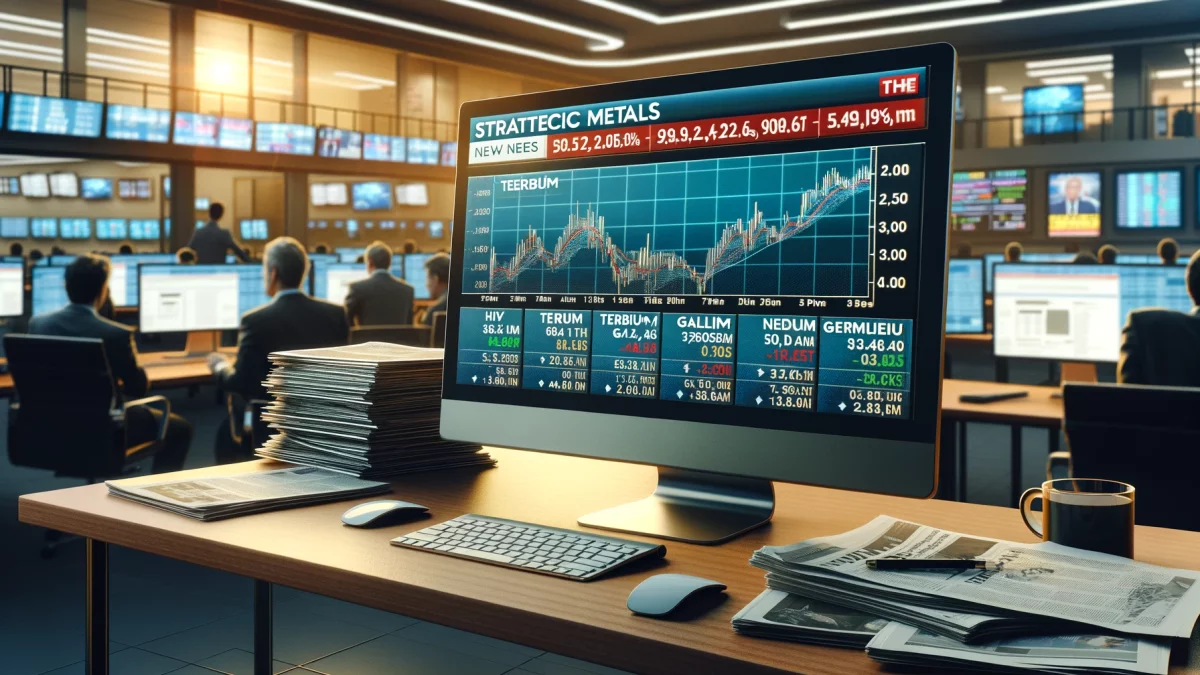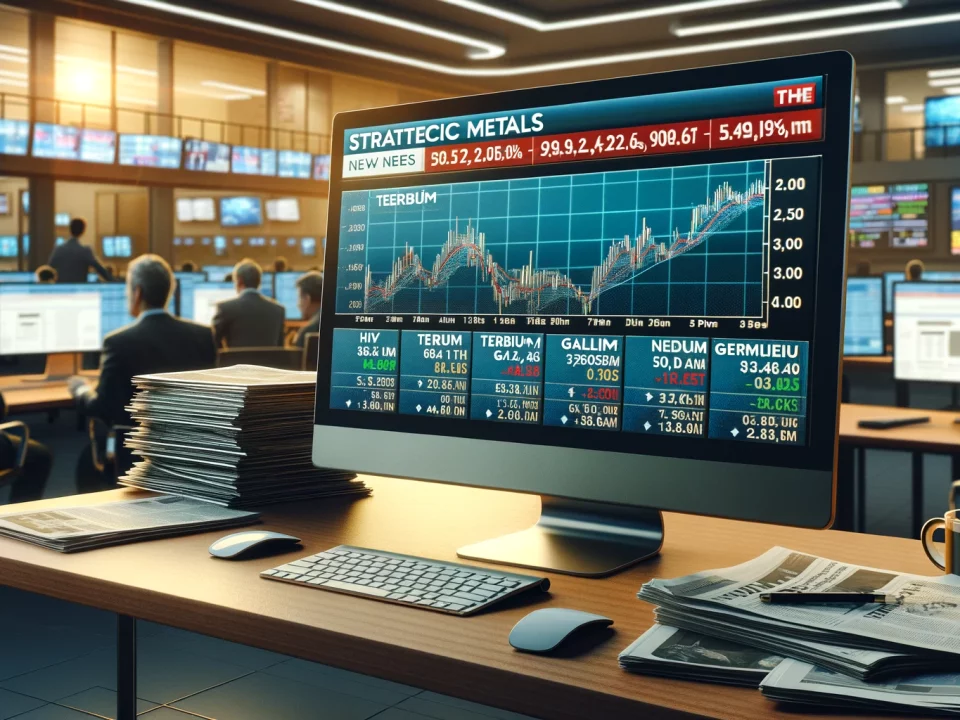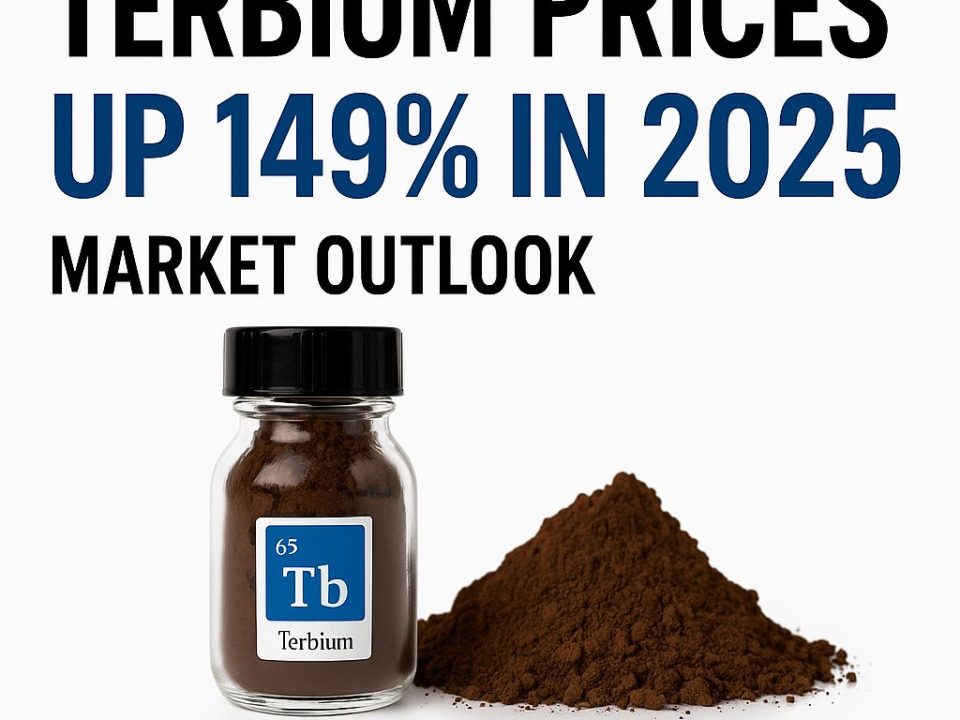
Weekly News Review July 21 – July 27 2025
July 27, 2025
Weekly News Review August 4 – August 10 2025
August 10, 2025A relatively quiet final week of July still brought some unexpected action in the PGM sector, with rhodium surging to a multi-year high amid tightening supply. Taking advantage of the calm, we also take a closer look at the short list of countries still receiving the critical strategic metal germanium from top producer China.
All this and more from the newsroom in this week’s weekly news round-up.
TWO YEARS OF EXPORT RESTRICTIONS: WHICH COUNTRIES ARE RECEIVING GERMANIUM?
Since summer 2023, exports of germanium from China have been subject to strict controls.
Following a complete halt, mainly due to the lengthy licensing process, exports eventually resumed, but volumes have remained low. As the world’s largest producer of this strategic metal, China’s export policy has significant implications for global supply chains. Accordingly, its trade data is closely watched.
The latest figures from China’s customs authority reveal a sharp year-over-year drop: in the first half of 2025, China exported just 5,068 kilograms of germanium, down from 12,410 kilograms during the same period in 2024, a decline of more than 50%. Exports in April and June 2025 fell to nearly zero.
Top Destinations (H1 2025):
Belgium – 1,950 kg
Russia – 1,024 kg
Japan – 1,000 kg
Germany – 902 kg
Taiwan – 111 kg
The rest of the world saw little to no supply. Canada, with just 6 kilograms, was the only country in the Americas to receive any germanium from China.
China classifies germanium as a dual-use material, meaning it has both civilian and military applications. It plays a critical role in defense technologies such as infrared sensors and night-vision devices. Due to its strategic value, Chinese customs require extensive documentation for export approval, which often causes delays or prevents shipments altogether.
In December 2024, Beijing escalated restrictions by imposing a full export ban on germanium and other dual-use goods to the United States.
RHODIUM PRICE JUMPS 35% IN JULY:
FOMO, supply deficits, and a dynamic automotive sector drive the price surge of the platinum group metals.
Rhodium prices soared 35% in July, marking their sharpest monthly gain in years as supply imbalances and renewed industrial demand pushed the metal to its highest level since early 2023. Rhodium reached $7,475 per troy ounce in early trading on Thursday, up 36.5% month over month.
The rhodium market is notoriously illiquid. Even minor shifts in supply or sentiment can trigger significant price swings, making the metal highly vulnerable to both overextension and sharp corrections. With limited physical inventories and few large institutional buyers, structural price instability is a persistent feature of the rhodium trade.
Some of July’s rally has been attributed to so-called fear-of-missing-out (FOMO) buying. According to Philipp Götzl-Mamba, precious metals expert at German raw materials trader TRADIUM, the market saw some automotive manufacturers as short on rhodium. This perception prompted other participants to stock up in anticipation of further inbound purchases, contributing to the surge in prices. Götzl-Mamba also sees the ongoing supply deficit driven by declining South African production as a significant factor behind the price surge. This perspective is supported by Johnson Matthey’s 2025 PGM report, which highlights that rhodium is facing its third consecutive year of supply shortfall, with demand consistently outpacing available supply.
Hybrid Demand Reshaping the PGM Landscape:
Beyond short-term supply imbalances, a broader structural shift in automotive demand is supporting the rhodium rally. Hybrid vehicles are becoming more attractive for consumers, particularly in regions where electric vehicle charging infrastructure is still underdeveloped. Unlike fully electric vehicles, hybrids use catalytic converters that rely on platinum group metals (PGMs), including rhodium, to filter pollutants from exhaust gases. Analysts expect this hybrid trend to accelerate.
China’s Emissions Crackdown Supports PGM Demand:
In July, China rolled out tighter vehicle emissions standards under the China VI-b framework. These new rules require real-world emissions testing and stricter limits on pollutants such as carbon monoxide and nitrogen oxides. Analysts believe the updated standards will increase the amount of PGMs required in catalytic converters, further boosting demand for rhodium and its sister metals.
BRAZIL SEEKS CLARITY ON ITS NATURAL RESOURCES:
President Lula announces exploration efforts and insists on government oversight in resource marketing.
Only about 30 percent of Brazil’s natural resources, including critical minerals, have been adequately surveyed, according to President Luiz Inácio Lula da Silva. To address this, he announced the creation of a new commission this week.
Speaking to the press, Lula also cited U.S. interest in Brazil’s so-called critical minerals, as reported by news network Globo. However, he emphasized that the sale of these resources or the land where they are found must not occur without government approval.
Due to its geological conditions, Brazil is considered particularly well-positioned to challenge China’s market dominance in rare earth elements. After China, Brazil holds the world’s second-largest reserves of this essential resource group.
The country also possesses ion-adsorption clay deposits, which are known for their high concentrations of heavy rare earth elements like dysprosium and terbium, both currently in high demand. This interest has intensified since China introduced export controls on these and other rare earths in early April.
Currently, Brazil’s production of critical minerals remains modest. Efforts are underway to build the necessary infrastructure, from extraction to component manufacturing, with both domestic and international partners. Western companies are involved, but Chinese investors also play a significant role.
For instance, long-term supply contracts with China are already in place for the Pela Ema mine, operated by Serra Verde in the central Brazilian state of Goiás. This site is currently Brazil’s only commercially active rare earth mine.
PRICE GUARANTEES A BLUEPRINT FOR RARE EARTHS MADE IN THE USA:
Government support for MP Materials could set a precedent.
In July, news broke that the U.S. Department of Defense would invest in MP Materials, the country’s only rare earth producer that also mines its raw materials. As part of the agreement, the government is offering price guarantees for certain rare earth products, well above current market rates. The goal: to establish a domestic rare earth industry independent of China, the current global leader in the sector.
Industry insiders suggest these guarantees may not remain a one-off. According to an exclusive Reuters report, a late-July meeting brought together government officials, mining companies, and downstream manufacturers to discuss the concept of minimum pricing.
While Peter Navarro, trade advisor to President Donald Trump, confirmed the meeting, he declined to comment on its specific content. Among the participants was tech giant Apple, which recently announced a collaboration with MP Materials.
FIGURE OF THE WEEK – 200% – GROWTH IN DEMAND FOR RARE EARTH ELEMENTS EXPECTED BY 2030.






